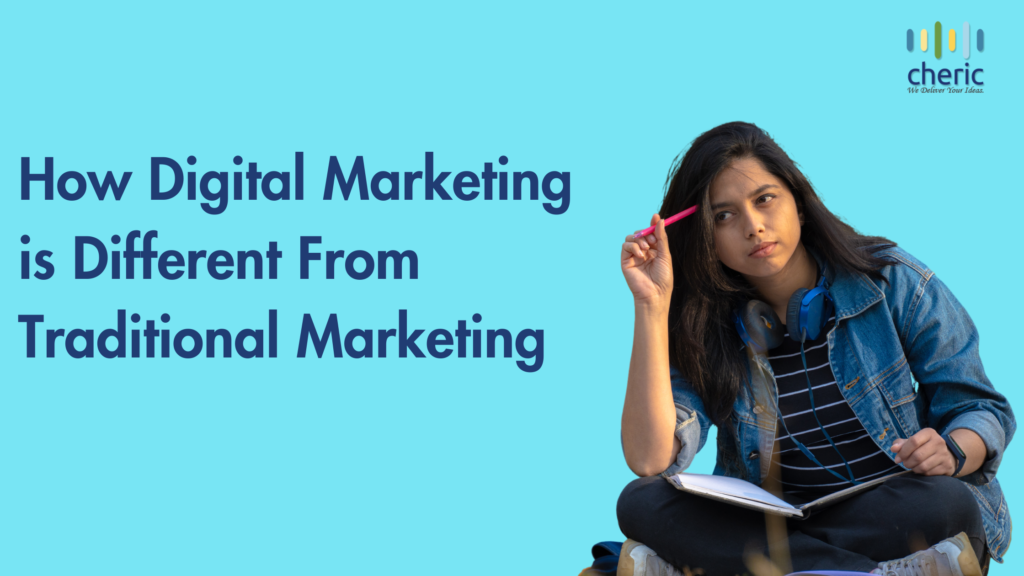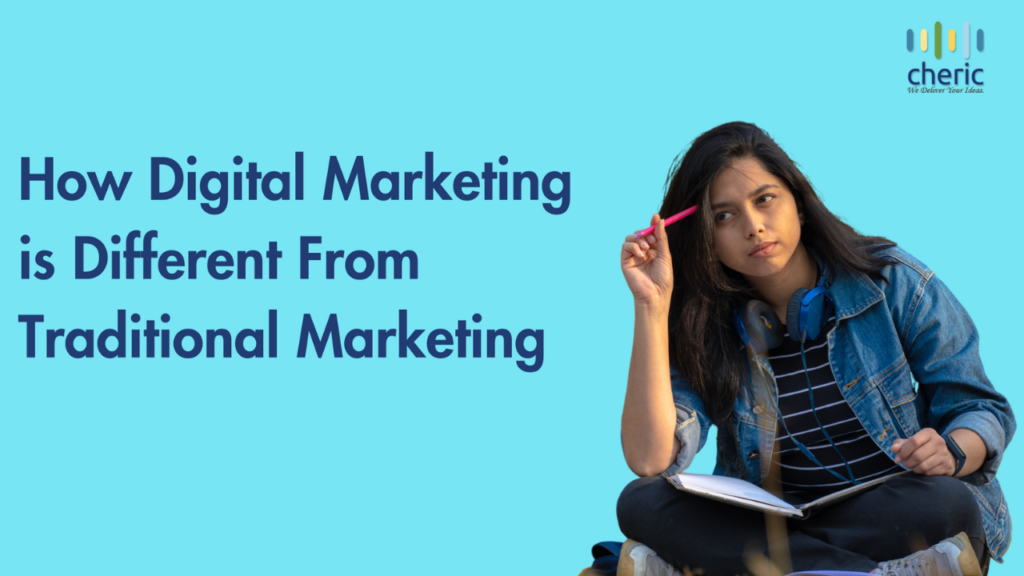Introduction
In today’s fast-paced and technologically advanced world, the way businesses promote their products and services has undergone a major transformation. Traditional marketing methods, which relied heavily on print advertisements, radio, and television commercials, have given way to digital marketing techniques. In this article, we will explore the fundamental differences between digital marketing and traditional marketing, and how businesses can leverage the power of digital marketing to stay ahead in the competitive market.

Targeting
One of the key disparities between digital marketing and traditional marketing lies in the ability to target specific audiences. Traditional marketing strategies often cast a wide net, reaching a broad audience with the hope of capturing the attention of potential customers. However, digital marketing enables businesses to precisely target their messages to specific demographic, geographic, or psychographic segments.
Digital Marketing: Through the use of data analytics and tracking tools, businesses can gather valuable insights about their target audience’s preferences, interests, and online behavior. This information allows marketers to tailor their campaigns to reach the right people at the right time. With digital marketing, businesses can employ tactics such as search engine optimization (SEO), social media advertising, and email marketing to engage with their target audience.
Traditional Marketing: On the other hand, traditional marketing methods rely on mass distribution and generic messaging. This approach often lacks the ability to reach individual consumers and tends to be less personalized. Television commercials, billboards, and newspaper ads are examples of traditional marketing techniques that primarily aim to generate brand exposure.
Interaction and Engagement
Digital marketing has revolutionized the way brands interact and engage with their customers. Unlike traditional marketing, digital marketing channels allow for two-way communication, fostering meaningful interactions and building customer relationships.
Digital Marketing: Through social media platforms, blog comments, chatbots, and personalized emails, businesses can actively engage with their customers, answer queries, and provide real-time support. In addition, digital marketing offers opportunities for customers to leave reviews and ratings, shaping the reputation of brands and influencing potential customers’ purchase decisions.
Traditional Marketing: In contrast, traditional marketing strategies typically involve one-way communication, with customers being passive recipients of the brand’s message. For instance, a television commercial or a print ad lacks the interactivity and immediate feedback that digital marketing channels provide.
Measurability and Analytics
One of the significant advantages of digital marketing over traditional marketing is the ability to track, measure, and analyze the effectiveness of marketing campaigns.
Digital Marketing: With the help of various analytics tools, businesses can collect data on website traffic, email open rates, click-through rates, and conversion rates. This valuable information enables marketers to make data-driven decisions, optimize campaigns, and allocate resources effectively. Moreover, digital marketing allows for real-time monitoring, providing instant insights into the performance of marketing efforts.
Traditional Marketing: In contrast, traditional marketing often lacks accurate and real-time data analysis. Measuring the success of a print ad or a television spot can be challenging, as it involves factors that cannot be precisely measured, such as the number of people who saw an ad or their level of interest.
Cost-Efficiency
Digital marketing offers a more cost-effective solution for businesses compared to traditional marketing methods.
Digital Marketing: While digital marketing requires an initial investment, it can yield a higher return on investment (ROI) due to its targeted approach. By reaching only the intended audience, businesses can reduce advertising expenditures, making their marketing efforts more cost-efficient. Additionally, digital marketing allows for flexible budget allocation, where businesses can allocate their resources based on real-time performance data and adjust their strategies accordingly.
Traditional Marketing: Traditional marketing often incurs higher costs, especially for television advertisements, radio commercials, and print media. These methods often involve fixed costs, irrespective of the actual reach and impact on the target audience.
Conclusion
In summary, digital marketing has transformed the marketing landscape by offering businesses more targeted and personalized approaches. The ability to interact and engage with customers, measure campaign effectiveness, and achieve cost-efficiency are distinct advantages of digital marketing over traditional marketing methods. As the digital world continues to evolve, businesses must adapt their marketing strategies to stay relevant and leverage the vast opportunities provided by digital marketing channels.

